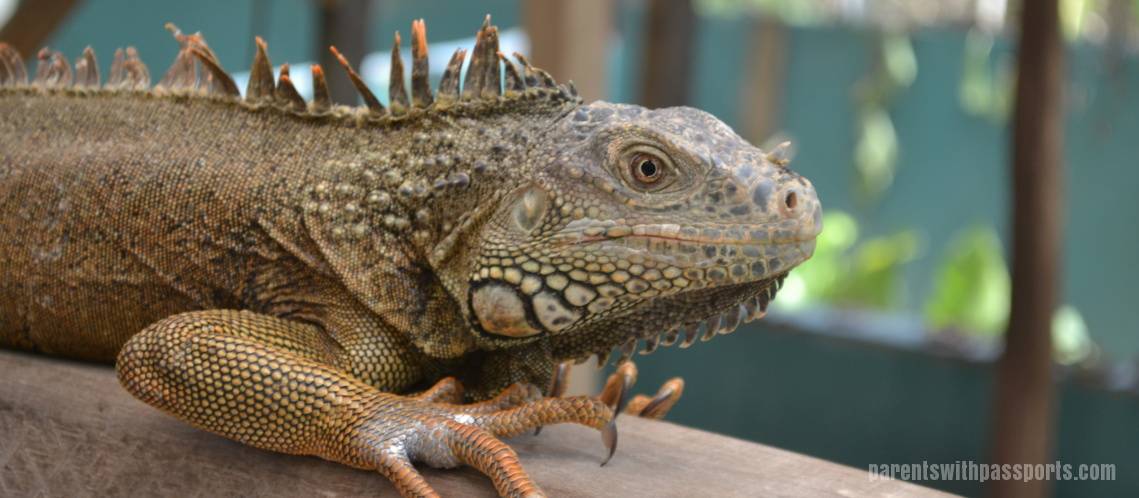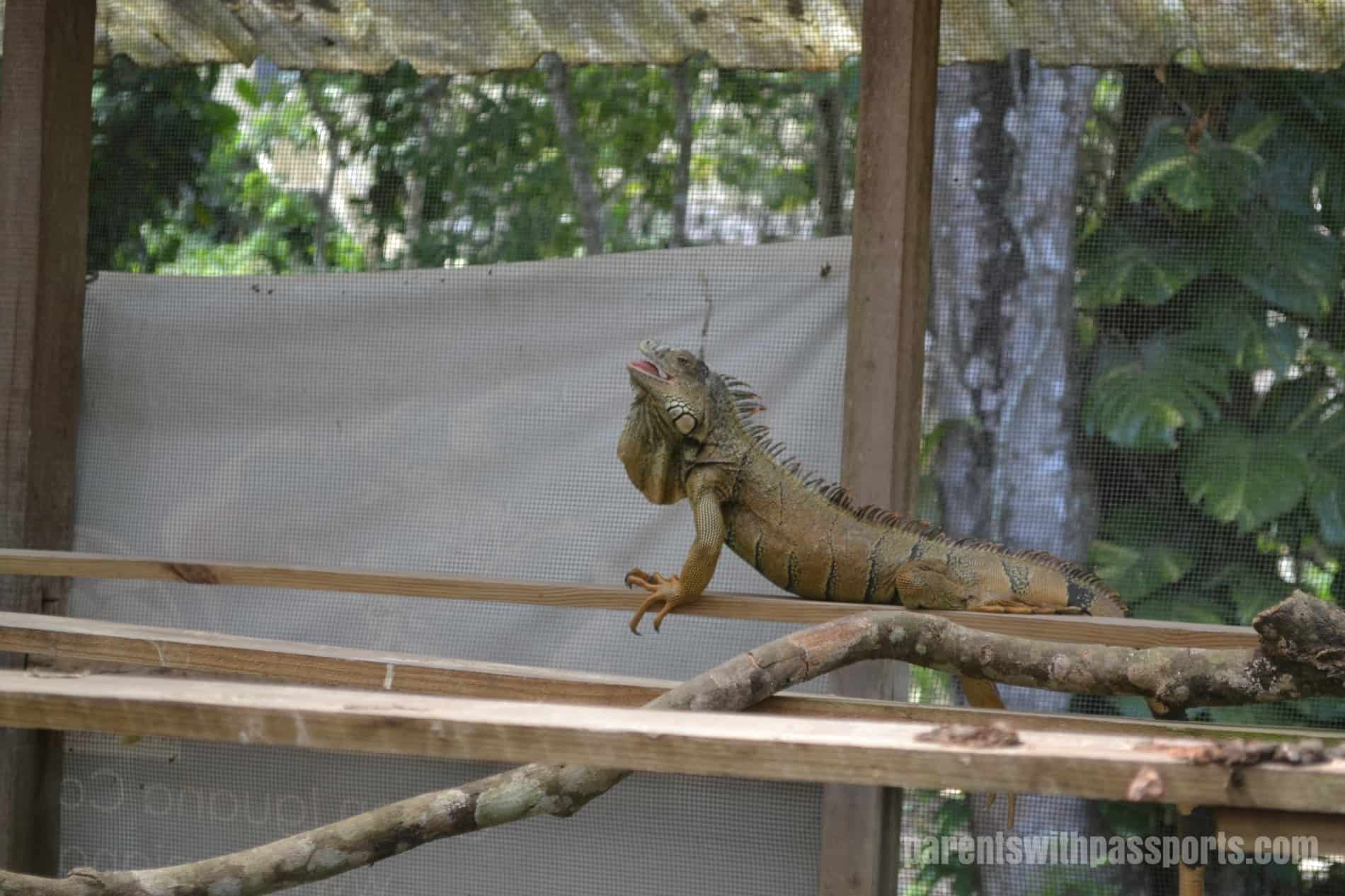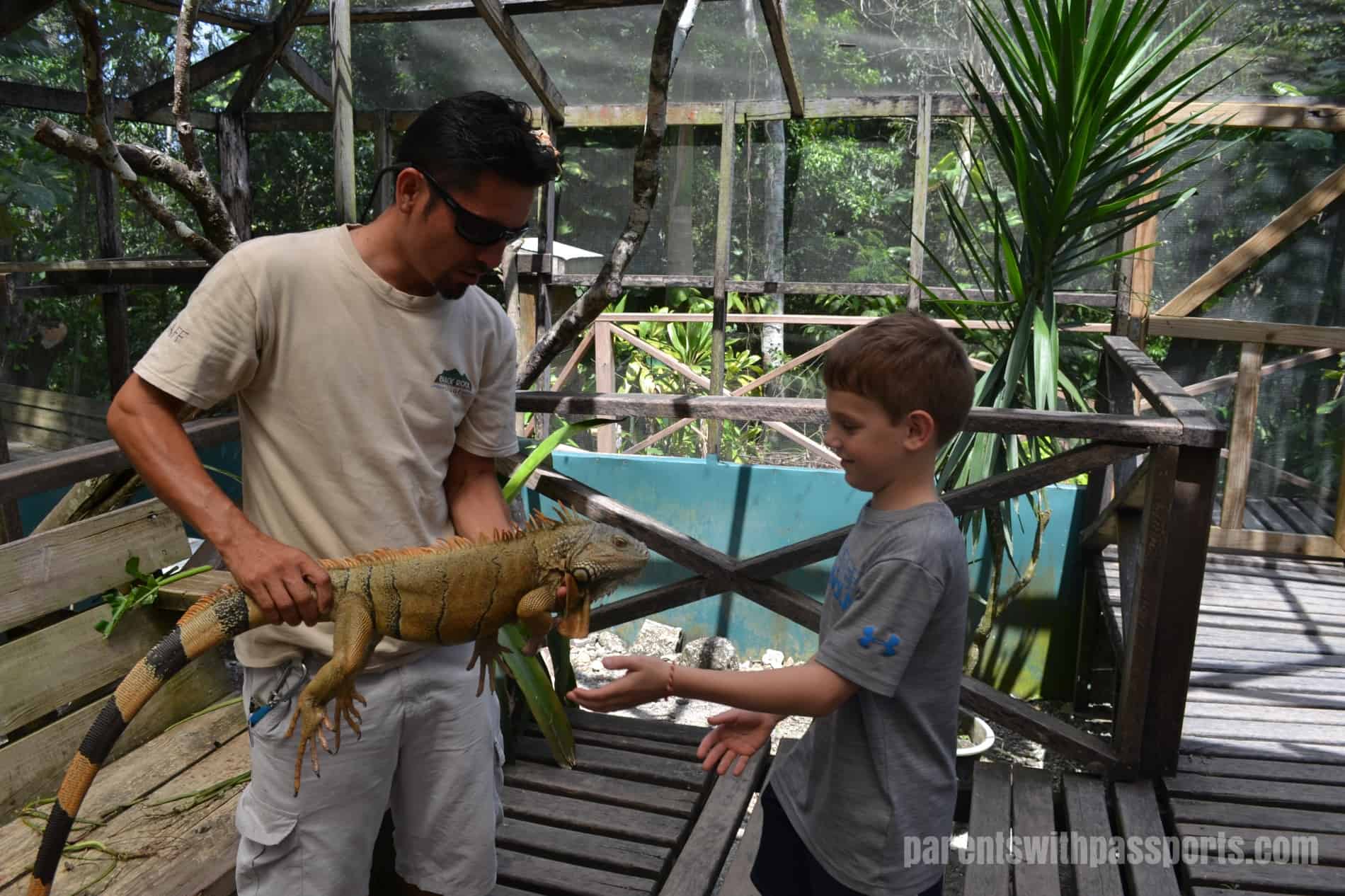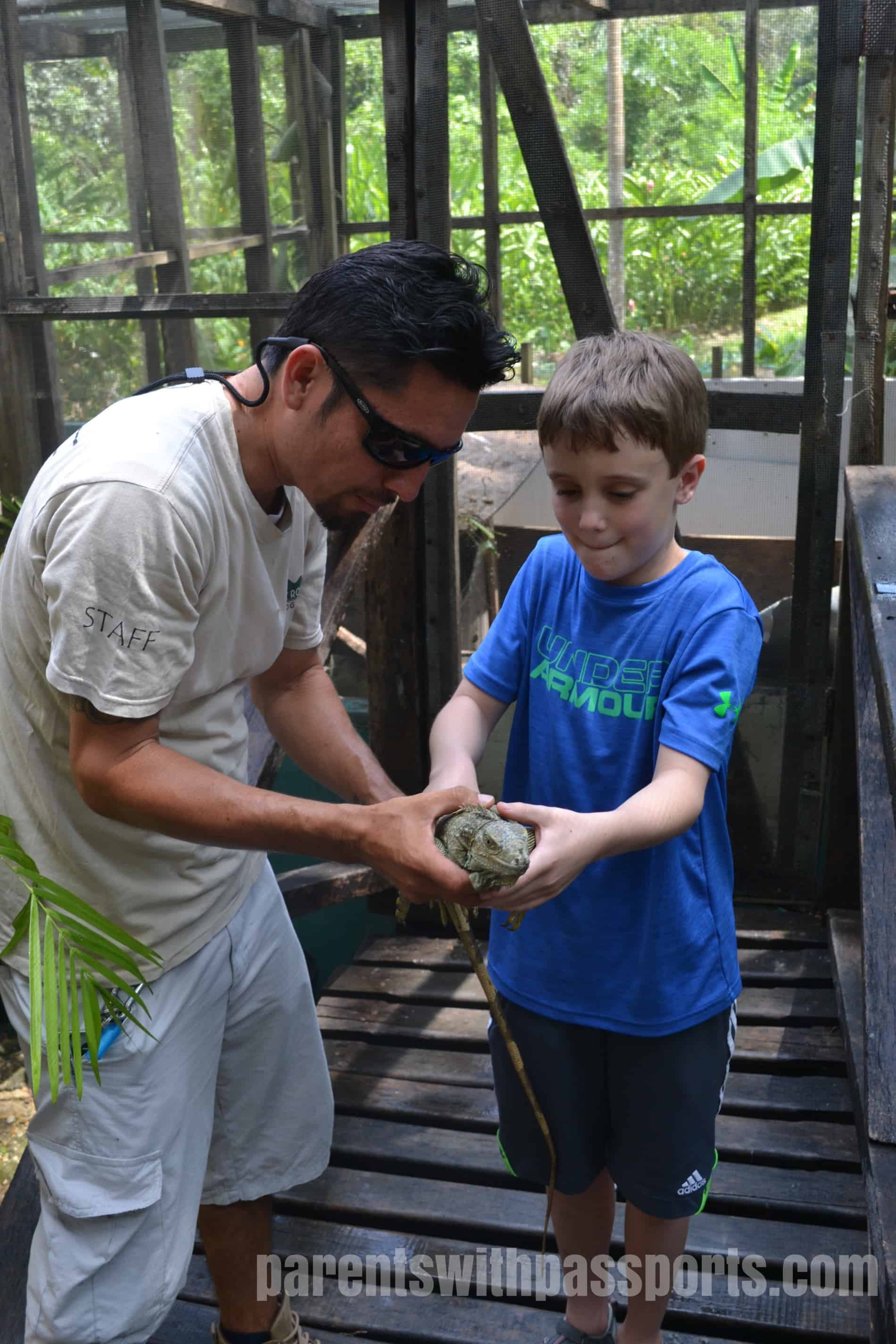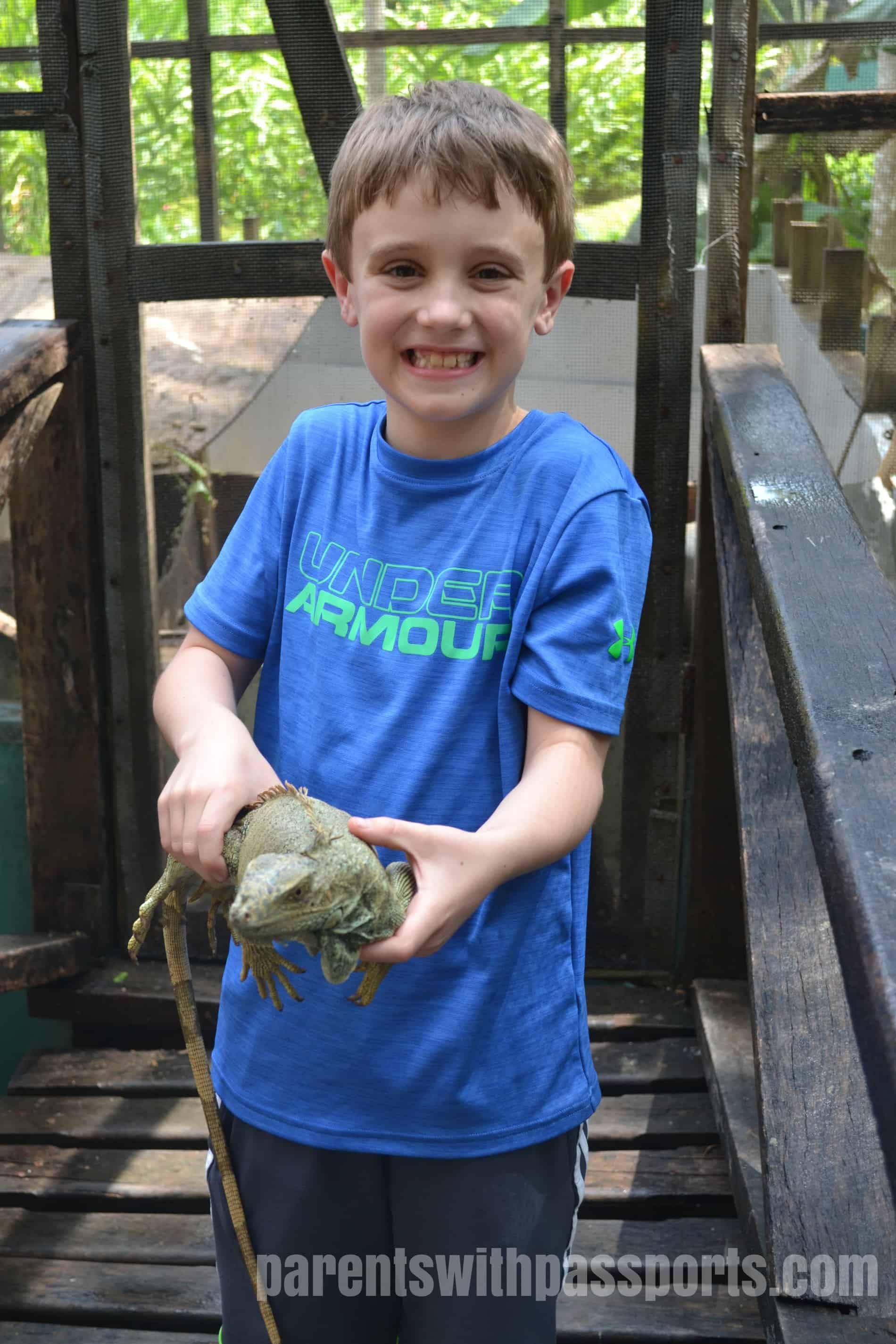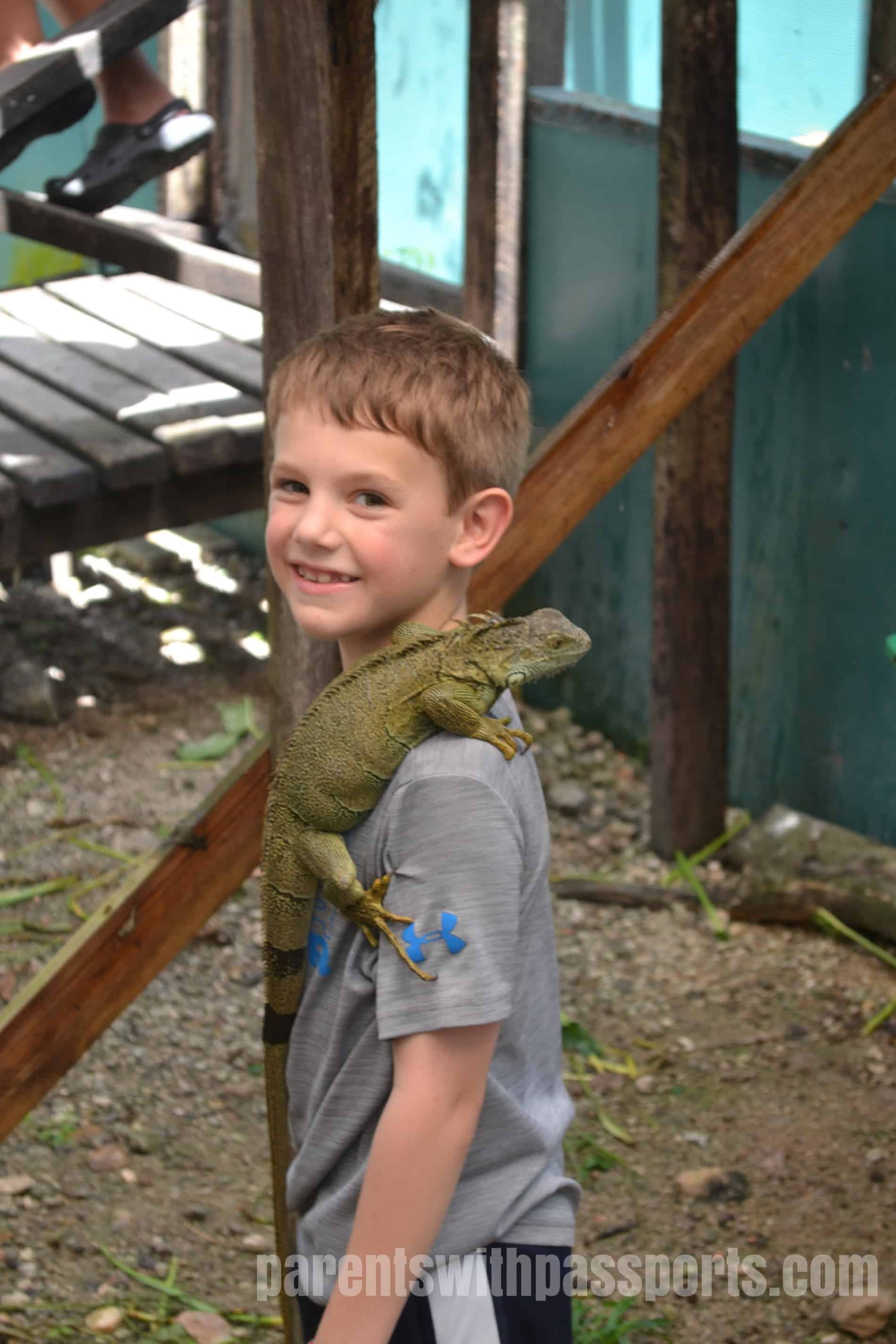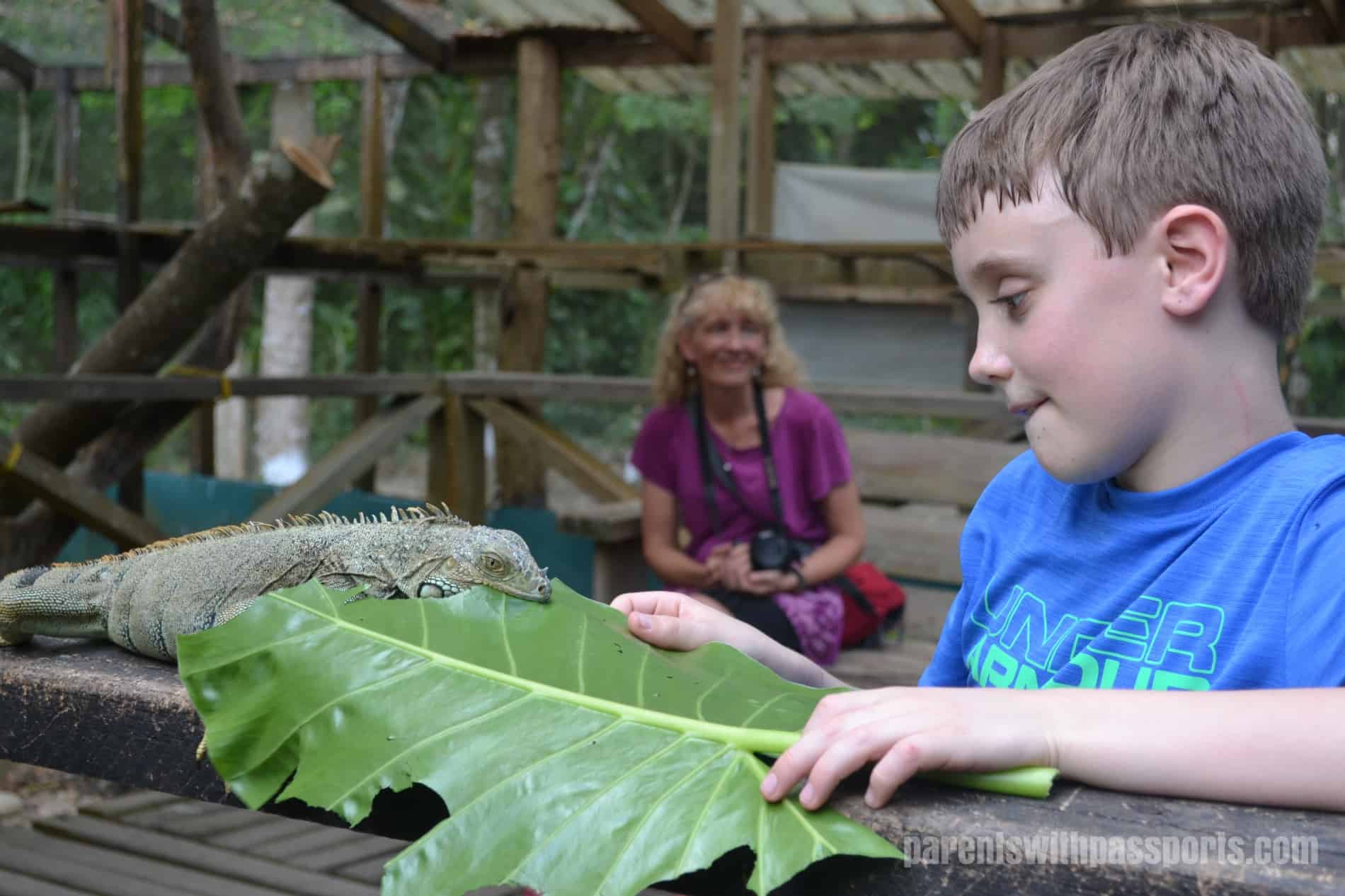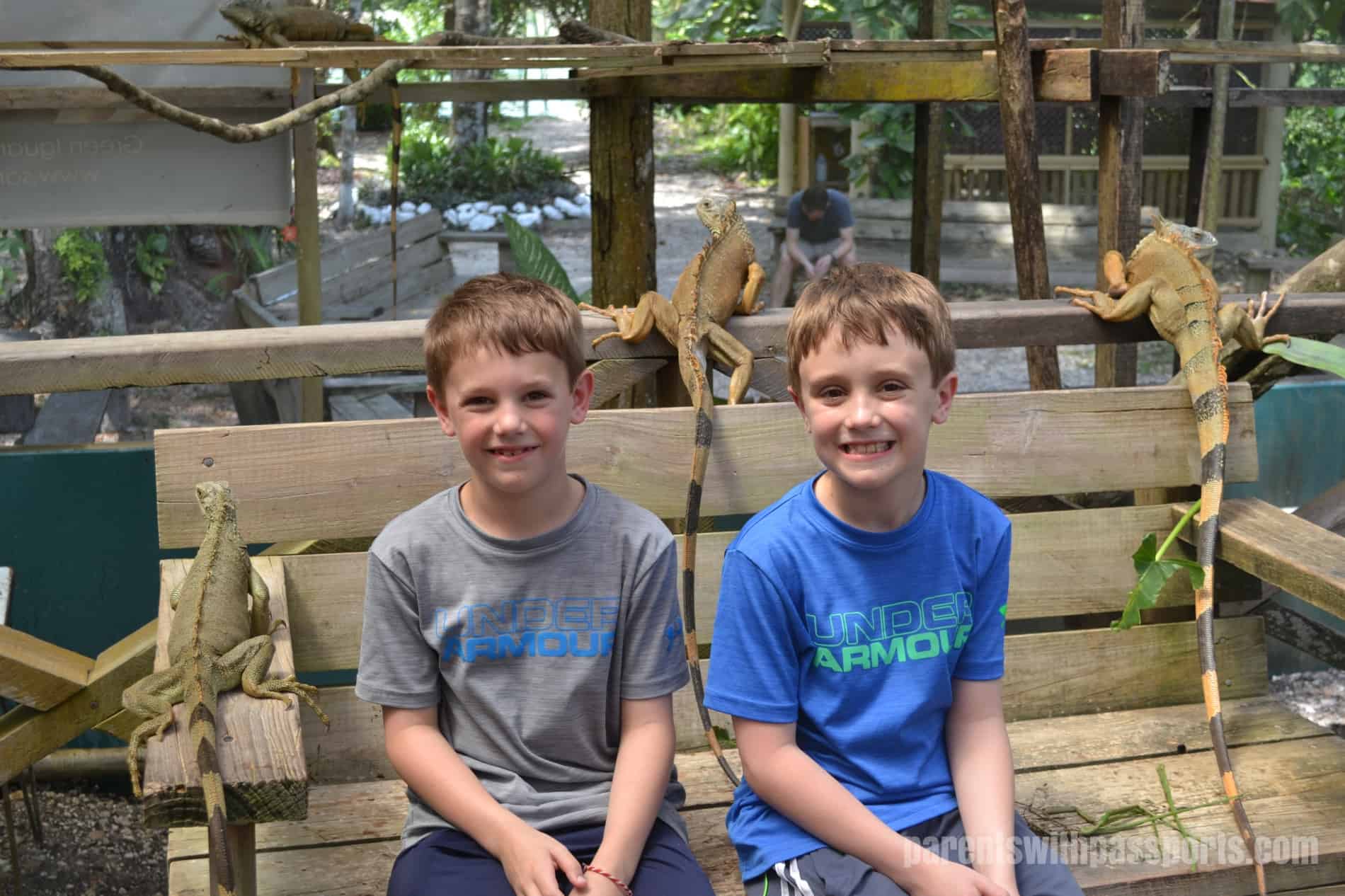After coming back across the Mopan River on the hand-cranked ferry from Xunantunich, we stopped for lunch at Benny’s Kitchen. Serving traditional Belizean cuisine (as well as basic kid-favorites like burgers and hot dogs), the open-air dining restaurant recommended by our guide Roque did not disappoint. I had a good chicken and rice dish but my husband made the even better choice and tried the pibil, which is a slow roasted pork dish. It was amazing. We enjoyed our meals and the boys enjoyed drinking from the tallest Sprite bottle I’ve ever seen and using our Belizean change to get toys from the capsule vending machine. This was actually the only meal we had outside the resort (due to its isolation in the jungle) and I was glad we had the opportunity to go to an authentic Belizean restaurant.
After our meal we headed to the San Ignacio Resort Hotel, which is home to The Green Iguana Conservation Project. Created in 1996, the Green Iguana Conservation Project promotes conservation of the threatened Green Iguana species. Much like the Belize Zoo, the Iguana Project combines education and conservation efforts in an attempt to protect a native Belize species.
Like many species around the world, the green iguana is threatened due primarily to the destruction of its natural habitat. The tree canopies that provide their homes are being cleared to make way for farms and houses. Hunting further contributes to their threatened status. In Central America, iguanas are hunted in the spring when females are laying their eggs. Both the reptile and its eggs are eaten.
We paid our $9 per person and waited for the next tour to start at the top of the hour. A guide came and led us out the back of the hotel and down a trail into a wooded area. Back amongst the trees was a wood and screen enclosure that houses more than 50 green iguanas. The project raises iguanas from eggs to juveniles and then releases them into the wild. At the same time, they rescued injured iguanas, which they rehabilitate and release when possible. When their injuries are too severe, they become lifelong residents of the iguana project.
We entered the enclosure and found the iguanas lounging everywhere. I knew that they could grow to be 5-6 feet long (including their tail), but you don’t really understand how big that is until you are right next to them. These were not even full grown but they just seemed enormous.
The boys were anxious to hold them but quickly found that they were heavy, awkward, and had super long nails. After a few failed attempts to pick them up, Roque swept in to the rescue. He taught the boys how to pick them up and how to hold them properly and then gently handed one to each of the boys.
The iguanas seemed perfectly content to be held, but their nails were super long and sharp and both boys came away with claw marks all over their arms and snags in their shirts. The boys eventually got the hang of picking the iguanas up themselves but learned quickly that if you get too close to a railing or branch, the iguanas think the ride is over and scurry off of you and onto the railing. But they had plenty of time to watch them, feed them and hold them.
I have to admit that I was disappointed in this activity. I had been blown away by the Belize Zoo and hoped for a similar experience here. Our guide (the project guide, not Roque) was really more of an escort than a guide. He walked us down to the enclosure and then essentially disappeared, going about his regular tasks on his own. I was expecting a hands-on, educational experience and it didn’t really live up to that. Had we not had Roque with us, I think the boys would have just ended up sitting around and watching the iguanas. I was extremely grateful that Roque stepped in and made it a great experience for them.
And it truly was a great experience for them. At the end of our trip, I would have said that this was the one thing I would skip if I had to do it all over again or was helping a friend plan a similar trip. But when I asked the boys what their favorite thing we did over our 8 days in Belize was, JB didn’t hesitate: “The Green Iguana Project!” So with that in mind, I recommend this tour for families with kids who are reptile or animal lovers. I clearly underestimated the value of this close-up interaction for my kids. Considering it is a low-cost, low-time, and low-effort activity, I would keep it on the list. Even if it isn’t your personal cup of tea, your kids will probably love it and you can feel good about contributing to the conservation of this cool species.

